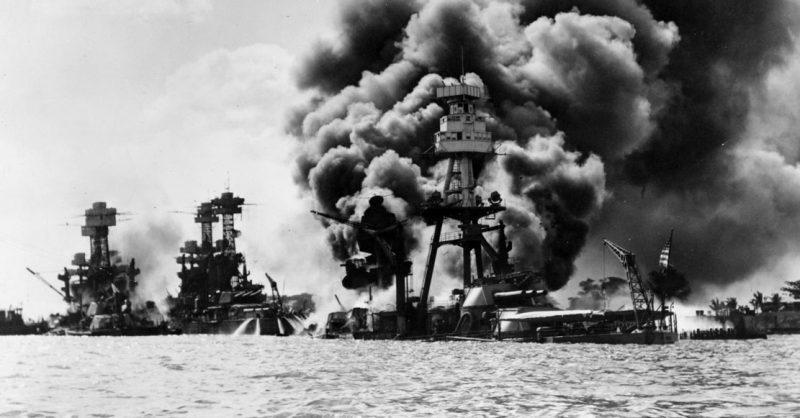“Why We Still Remember” is the name of a new display put on at the Museum of World War II in Natick, Massachusetts. The exhibition is of items commemorating the Japanese attack on Pearl Harbour, on the 7th December 1941 that plunged the US into WWII.
The 75th Anniversary of the attack is being commemorated at a private museum, near Boston and according to the museum’s founder Kenneth Rendell, the theme of this display should resonate with all Americans in the modern era.
“We underestimated the Japanese terribly. Everyone was paying attention to Europe, no one was paying attention to Asia,” he says. “It explains a lot about why we were caught flat-footed. That’s the importance of learning from history. It’s having respect for the enemy.”
The exhibition will run from now until the 7th January 2017, and it is a thought-provoking display of the contrasts between the two countries. On one side are artifacts showing the imperialistic ambitions of the Japanese leading up to the attack. Japanese news reports are full of the victories over China in the 1930s and propaganda abounded of Japan’s ability to overcome her enemies.
On the other hand, there are photographs taken by US servicemen of their time on Hawaii; an exotic island paradise. It is difficult to believe that these servicemen were stationed at Pearl Harbour, the headquarters of the Pacific Fleet.
The exhibition includes items from the attack itself, when 300 Japanese Zeros pounded the harbor and the surrounding areas killing or wounding over 3,000 Americans and destroying thousands of tons of American Naval assets.
In a glass case is a poignant reminder with a short piece of ticker tape reading, “AIRRAID ON PEARL HARBOR X THIS IS NO DRILL” alongside a piece of a Japanese warplane and the binoculars from the bridge of the USS Arizona, which was sunk taking 1,000 souls with her.
Hung on the walls are the headlines of the newspapers from the mainland shrieking outrage at the cowardly attack contrasted with the euphoria of the Japanese papers.
After this attack, there was huge fear on the US mainland that the Japanese immigrants now living the US would be tempted to fight on the side of their ancestral countrymen. Thousands of Japanese immigrants and their families were forced into internment camps, and the exhibition tries to show the human side of this story by highlighting one specific family.
Tom Kasai, lived with his family in Los Angeles but while he served with the US military, his family were interned in a camp. The exhibition displays this conundrum with personal letters, photographs, postcards, his uniform and medals including the Purple Heart that he was awarded when he was wounded in France, Fox News reported.
“Remember Pearl Harbour” was printed onto many surfaces and was seen on pins, buttons, and other keepsakes and became a rallying cry through WWII.
President Roosevelt declared this attack as a “date which will live in infamy” and 75 years later this call still evokes strong emotions in many Americans, even though there are few survivors of this dark day in American history still alive.
